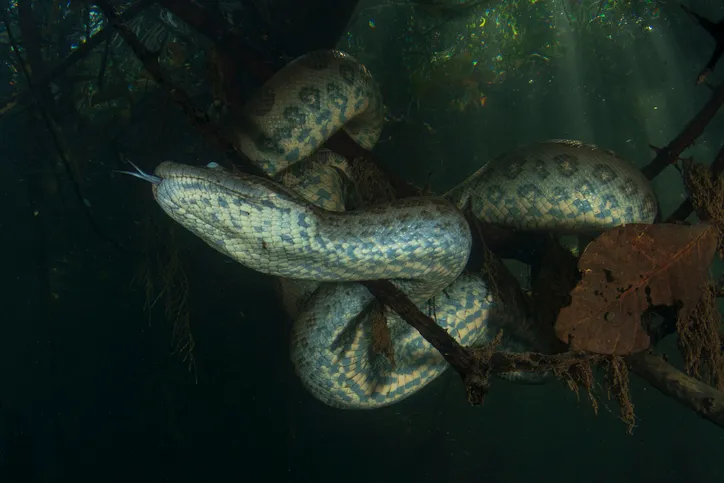A recent paper published in MDPI Diversity has revealed that the world’s biggest and heaviest (but not the longest) snake – the green anaconda (Eunectes murinus) – is actually two distinct species, thought to have split almost ten million years ago.
Although they look identical, the genetic difference between them is five and a half per cent. This may not seem like much, but it is actually an astonishing amount for what was, until recently, thought to be one species. For context, the difference between humans and our closest great ape relatives is roughly two per cent.
- What is the longest snake in the world?
- What's the smallest snake in the world?
- 10 deadliest snakes in the world
A quest to discover the northern green anaconda
Despite green anacondas being such large and impressive animals (the longest snake the team found measured 6.3 metres/20.7 feet), the team didn't have an easy time studying the snakes, with the study taking 17 years to complete.
“We faced all the difficulties you may want – this is a secretive animal. Even though it is big, it is hard to find and hard to see when it is in front of you,” says Jesús Rivers, Professor of Biology at the New Mexico Highlands University and lead author of the paper.
“Then you need to catch it in the water, where they have the upper hand. Plus, the strength and home field advantage. After capturing it and collecting the sample, the sample needs to be moved across countries, requiring some very time-burdensome permits, followed by costly molecular analysis sequencing.”
“You need to catch it in the water, where they have the upper hand."
Samples were taken from across South America, including on an expedition joined by the actor, rapper and producer Will Smith for his upcoming National Geographic and Disney series Pole to Pole.

New green species, rethinking yellows
The paper suggests naming the two green anacondas as the southern green anaconda, which keeps the scientific name of E. murinus due to historical reasons and its larger distribution, and the northern green anaconda, which has been given the scientific name of E. akayima – with ‘akayima’ referencing the word for anaconda in Cariban languages.
The study also examined the genetics of the other three anaconda species – dark spotted anaconda (E. deschauenseei), Beni anaconda (E. beniensis) and yellow anaconda (E. notaeus) – and concluded that they should actually all be grouped together as one species – E. notaeus.
“We did not find a big difference between the three of them, and our findings meant the previous arguments for morphological difference and geographical separation between E. deschauenseei and E. beniensis fell apart,” explains Rivers.
"There was no way to keep them. We consider downgrading them to subspecies. However, E. notaeus flanks both groups so making them anything would have rendered E. notaeus paraphyletic.”

Main image: The new discovery suggests that green anacondas – a type of aquatic snake – are actually two separate species. Credit: Getty
